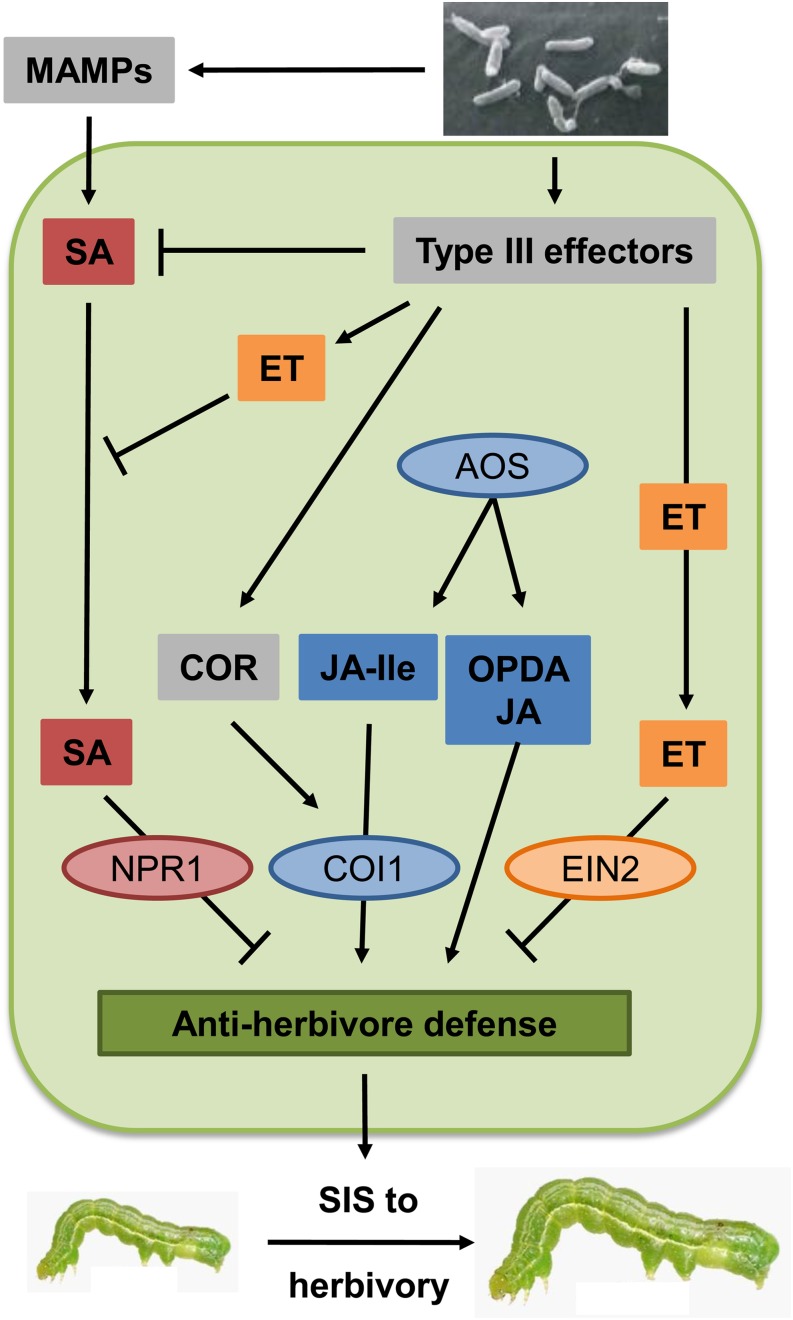Figure 5.
Simplified Model of Pathogen-Triggered SIS to Herbivory.
In the first layer, MAMP-triggered SA signaling (red) antagonizes COI1-dependent JA signaling (blue) via SA/JA antagonism that relies on NPR1, thereby weakening antiherbivore defenses and causing SIS to herbivory. This is neutralized in the next layer where SA signaling is suppressed by COR and some type III effectors that interfere with MAMP-triggered signaling. At the same time, enhanced ET signaling (orange), also mediated by type III effectors, interferes with antiherbivore defenses that rely on octadecanoids produced via AOS, but that function independent of COI1, leading again to SIS to herbivory. When one of the type III effectors elicits ETI, the induced susceptibility is nullified and effector-triggered signaling synergizes with COR to induce systemic resistance to herbivory. P. syringae–associated factors are indicated in gray squares, Arabidopsis hormones in colored squares, and Arabidopsis proteins in colored ellipses. (T. ni photo courtesy of Nestor Bautista Martínez.)

